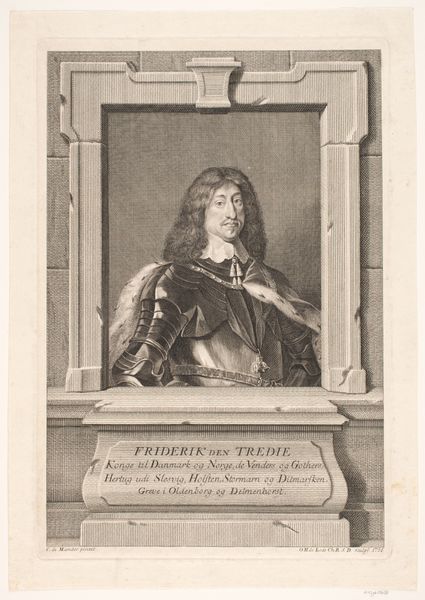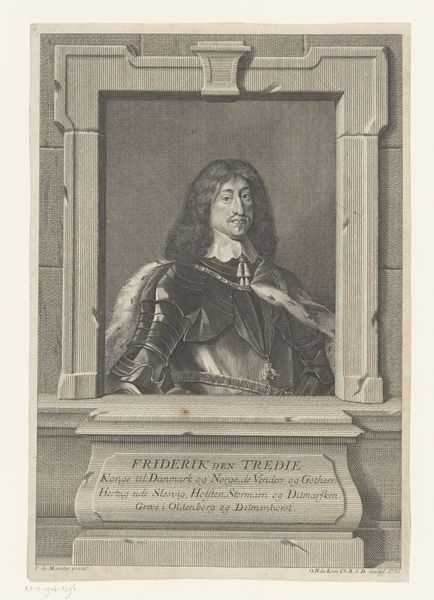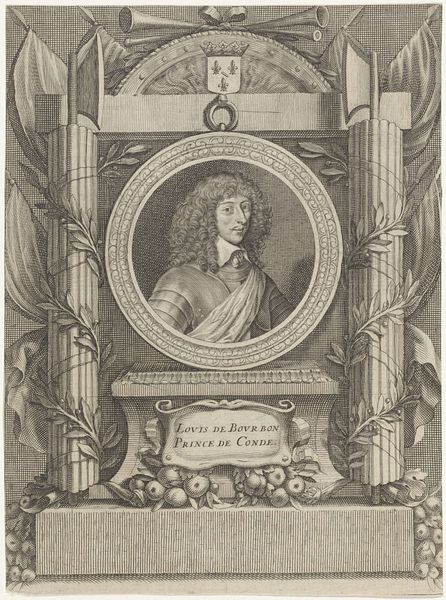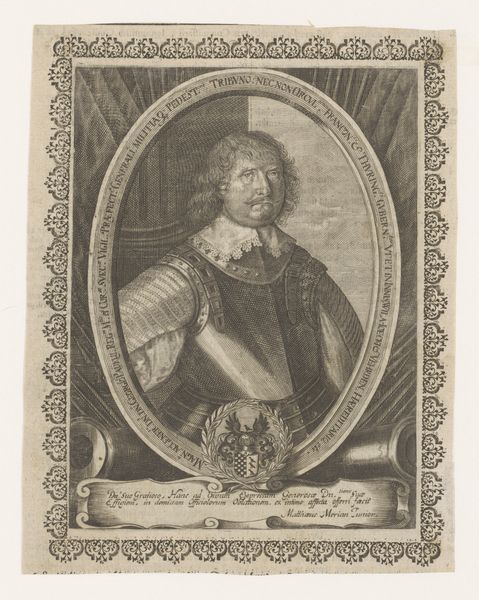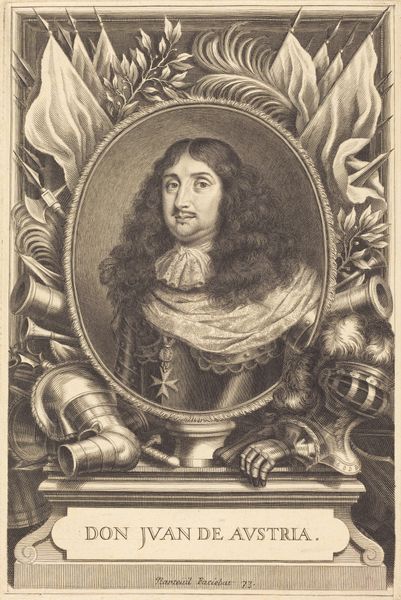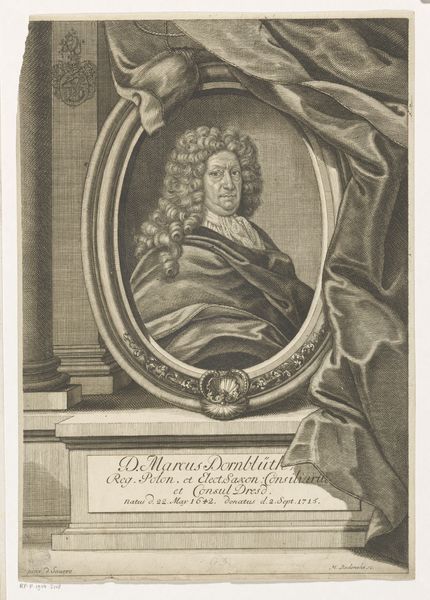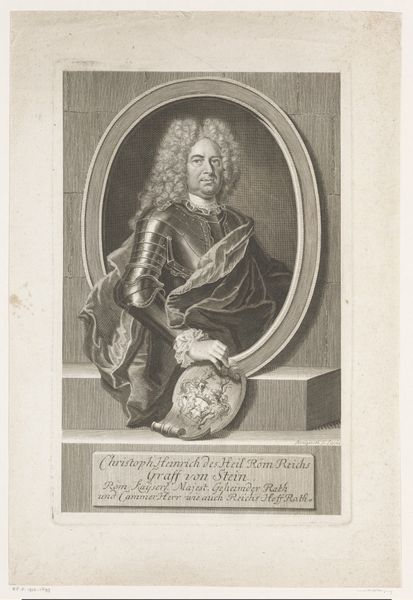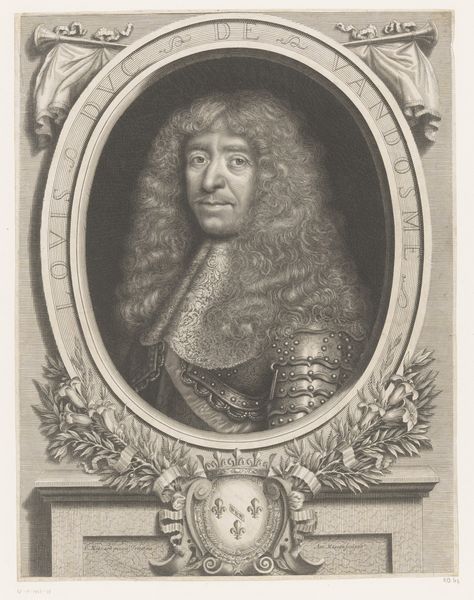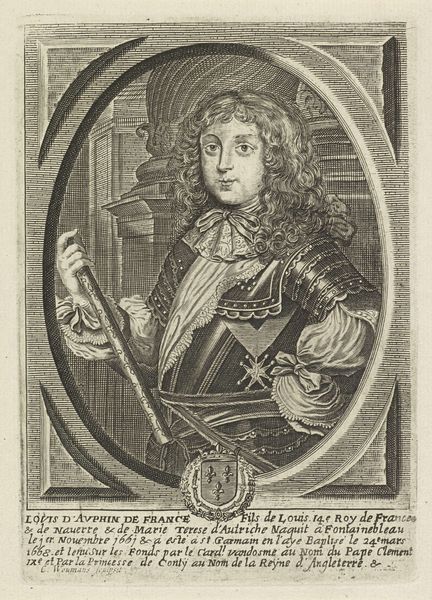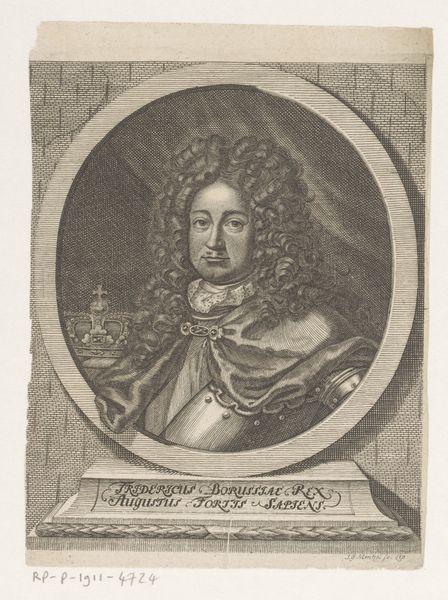
print, engraving
#
portrait
#
baroque
# print
#
19th century
#
history-painting
#
academic-art
#
engraving
Dimensions: 195 mm (height) x 140 mm (width) (plademaal)
This print of Frederik III was made by Jonas Haas in 1757, using etching and engraving. These are both line-based printing processes, relying on the controlled corrosion of a metal plate to create an image. Consider the labor involved. First, the artist applied a waxy coating to the copper plate, then carefully drew through it with a sharp needle, exposing the metal. Acid was then applied, biting into the lines. For the areas of fine detail, like the King’s face, Haas would have used the engraving technique, directly cutting lines into the plate with a burin. This required immense skill. The plate was then inked, wiped clean, and printed onto paper using a press. The resulting image is a product of chemical reaction, physical force, and skilled hand-work. What may seem like a straightforward portrait is actually a complex layering of material transformations, artistic techniques, and social context. Recognizing this complexity is critical to understanding the full depth of this artwork.
Comments
No comments
Be the first to comment and join the conversation on the ultimate creative platform.
